Books by Oliver Dietrich
https://refubium.fu-berlin.de/handle/fub188/31025, 2021
https://refubium.fu-berlin.de/handle/fub188/31025, 2021
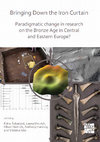
The fall of the Berlin wall in 1989, and the subsequent political changes in much of central and ... more The fall of the Berlin wall in 1989, and the subsequent political changes in much of central and eastern Europe, were major events in the lives of all who lived through them. These changes had effects not only in politics but also in academia and – for archaeology – in the ways in which fieldwork and publication were organised. Instead of a rigid adherence to traditional, “Marxist” principles in thinking about the past, essentially imposed from above, scholars were now free to explore a range of different models and modes of thought in how they interpreted site and artefacts.
This volume considers the changes in archaeological thought and practice that have taken place – or not taken place – in Bronze Age studies in the countries that were previously part of the Soviet bloc. Contributors from Hungary, the Czech Republic, Slovakia and Romania, as well as German and British scholars who have worked in those countries in recent years, describe aspects of their experiences in fieldwork and interpretation in the 30 years that have elapsed since that time. These are supplemented by personal reflections by a group of British scholars who worked there both before and after the “Change”. While the contributions present personal views, the message is clear, that the academic landscape in the Bronze Age archaeology of central and eastern Europe has changed out of all recognition in these last decades.
Festschrift on the occasion of Dr. Tudor Soroceanus 65th Birthday.
23 Studies centering on the B... more Festschrift on the occasion of Dr. Tudor Soroceanus 65th Birthday.
23 Studies centering on the Bronze Age of the Carpathian Basin.
Papers by Oliver Dietrich

Dacia, 2024
Figurines, particularly female anthropomorphic depictions, are a hallmark of the southwest Asian ... more Figurines, particularly female anthropomorphic depictions, are a hallmark of the southwest Asian and Eurasian Neolithic and Chalcolithic. During the European Bronze Age, plastic anthropomorphic representations are thought to largely disappear from the archaeological record in many regions; figurines are believed to have been no longer an integral part of everyday life and beliefs. The massive occurrence of figurines along the middle and lower Danube and specifically the Iron Gates region in the Late Middle and earlier Late Bronze Age, particularly in the Žuto Brdo – Gârla Mare Culture, is seen as an exception and has accordingly attracted much attention. The apparent lack of a local figurine tradition has been the basis for a variety of theories on this sudden appearance frequently involving contacts with the Aegean world. It has become increasingly clear though that figurines are in fact attested in lower quantities for many southeast and central European regions during the latest Chalcolithic and the Bronze Age. The present paper will re-examine the evidence for Bronze Age anthropomorphic figurines from southeastern Europe before and beyond the Žuto Brdo – Gârla Mare Culture and challenge the image of an “exceptional occurrence” of figurines in favour of a continuous, if sometimes hardly archaeologically visible, development of depictions of the human body.
Mitteilungen der Anthropologischen Gesellschaft in Wien, 2024
Bronzezeitliche Goldgefäße sind eine beeindruckende, jedoch wissenschaftlich oft schwierige Fundg... more Bronzezeitliche Goldgefäße sind eine beeindruckende, jedoch wissenschaftlich oft schwierige Fundgruppe. Zahlreiche Goldgefäße sind Unikate, viele wurden einzeln gefunden oder sind Teil von Horten ohne gut datierbare Beifunde. Somit können viele Gefäße nur durch stilistische Detailvergleiche in die mittlere und insbesondere die späte Bronzezeit eingeordnet werden. Der vorliegende Beitrag diskutiert eingehend die bereits 1909 gefundene Goldschale von Krottorf. Es werden Argumente für eine noch mittelbronzezeitliche Datierung des Fundes gesammelt und es wird damit ein Anhaltspunkt für die bislang kaum sichtbare Edelmetalltoreutik dieser Epoche in Mitteldeutschland gewonnen.
Die Kunde. Zeitschrift für niedersächsische Archäologie, 2020
Vasile Diaconu, Alexandru Gafincu (eds.), The Bronze Age in estern Europe. Multidisciplinary studies., 2023
Recent research has shown that the creation of Bronze Age metalwork hoards is based on selection ... more Recent research has shown that the creation of Bronze Age metalwork hoards is based on selection processes and culture-specific rules. Not everything is hoarded, and not everything can be mixed and matched with everything else. Hoards that consist of only one find category ("reine Horte" in German) are of particular interest in this context, since the
selection and placement of only specific bronzes is particularly evident here. The present article discusses "pure" hoards composed exclusively of socketed axes along the lower Danube and in the eastern Carpathian Basin. A new list of such discoveries is presented, their chronology, chorology and interpretation discussed.
Prähistorische Zeitschrift
The term shamanism is widely used in archaeology to describe early belief systems. Sometimes, thi... more The term shamanism is widely used in archaeology to describe early belief systems. Sometimes, this has taken the form of a one-size-fits-all-explanation, without a discussion of the concept or the cultural contexts it was applied to. Recently, the Early Neolithic (9600–7000 BCE) of southwestern Asia has become a focal point of this discussion. Sites like Nevalı Çori, Göbekli Tepe, Jerf el Ahmar, Körtik Tepe, Tell Abr’3, Tell Qaramel, Wadi Faynan 16, Karahantepe and Sayburç have produced rich evidence, mostly of an iconographical nature, that seems to offer direct insights into early belief systems. The current contribution uses one of the best researched sites, Göbekli Tepe, as a case study to develop criteria for the identification of shamanism in the archaeological record.
Marisia, 2022
1972 wurde in Timişoara, im Stadtviertel Fratelia, ein Depotfund geborgen, der drei Gegenstände e... more 1972 wurde in Timişoara, im Stadtviertel Fratelia, ein Depotfund geborgen, der drei Gegenstände eines Metallhandwerkers enthielt und in Ha B1 datiert wurde. Zeitgleich kamen zwei Tüllenbeile zutage, die nicht Teil der Erstpublikation waren. Der vorliegende Artikel diskutiert die Funde, ihre Datierung und mögliche Zusammengehörigkeit.
Documenta Praehistorica, 2023
Stone is often regarded as the ideal medium for the long-term preservation of knowledge, as it is... more Stone is often regarded as the ideal medium for the long-term preservation of knowledge, as it is resistant to change. Early to middle Pre-Pottery Neolithic Göbekli Tepe in southeastern Turkey has repeatedly been treated as a prime example for such external memorial storage in durable stone. The present paper challenges this view. A close examination of pillars and their reliefs in Building F reveals the fluid character of imagery with repeated and frequent phases of erasure and re-making. It is argued that it is not the durability of stone that made it suitable for the preservation of ‘cultural memory’, but the possibility to re-shape the image carriers continuously over a long period of time, which resulted in processes of transmission, learning and memorization.

Dacia, 2021
The present paper analyzes the formation processes of the four large Bronze Age hoards Aiud, Guşt... more The present paper analyzes the formation processes of the four large Bronze Age hoards Aiud, Guşteriţa II,
Şpălnaca II and Uioara de Sus. While several studies have shown that hoards are constituted due to regionally and chronologically differing rules about the categories and conditions of objects included and thus the hoarding phenomenon constitutes a social praxis rooted in religious beliefs, finds with a large number of fragments and raw material have traditionally been interpreted as accumulations of scrap metal for re‑melting. Here, the focus is on two aspects of the large hoards that speak against that interpretation. The four hoards can be identified as long‑term collections, including objects that date between the Middle Bronze Age and the “jüngere Typengesellschaft” after v. Brunn. Although roughly contemporary and located in a relatively small area, they have different catchment areas. Socketed axes with chevron decoration and marks on sickles are used as case studies to look at possible formation processes. Certain decoration variants are characteristic to regions within Transdanubia and the Sava‑Drava‑region. In Transylvania, they are known nearly exclusively from Aiud, Guşteriţa II, Şpălnaca II and Uioara de Sus, which are located in an area rich in natural resources, particularly salt with the Mureş as westwards connection. Drawing on Marcel Mauss’ theory on gift exchange as basis for trade networks, the peculiar distribution of these bronzes is evidence for intense and long‑term west‑east contacts possibly based on salt as a commodity. Several possibilities for the role of “foreign” bronzes within this network are discussed: (1) as gifts between people to secure personal relations for trade; (2) as a payment for salt; (3) as votives of “foreign” people visiting the region for trade. Hoarding these objects may have been a means of demonstrating the importance of the dedicants within supra‑regional networks.
Documenta Praehistorica
Large 'scrap' metal hoards have so far been seen as a characteristic of the older Urnfield Period... more Large 'scrap' metal hoards have so far been seen as a characteristic of the older Urnfield Period in the eastern Carpathian Basin. Using the hoard from Dezmir, Romania, as a starting point, this paper describes a group of hoards with chronologically and spatially diverse components. These hoards were hidden during the younger Urnfield Period and represent smaller variants of the older, large 'scrap' hoards. Earlier research has used them to define a chronological horizon ('Phase 3-Jupalnic-Turia-Ha A2'). Based on archaeological observations, spatial data and a correspondence analysis, we argue that they represent a specific hoarding practice instead, characteristic of Phase 4, i.e. the younger Urnfield Period.
Documenta Praehistorica , 2022
The present paper explores the possibility to better understand the function of pits through phyt... more The present paper explores the possibility to better understand the function of pits through phytolith and starch analysis. A case study from the Late Bronze Age/Early Iron Age settlement phase of Rotbav in southeastern Transylvania is discussed in detail. It appears that a large storage vessel originally sealed with a bowl was kept in a pit filled with chaff or straw to preserve its contents. IZVLE∞EK-V ≠lanku raziskujemo mo∫nost za bolj∏e razumevanje namembnosti jam na podlagi analiz fitolitov in ∏kroba. Obravnavamo ∏tudijski primer iz pozno bronasto-in starej∏e ∫eleznodobne faze naselbine Rotbav v severovzhodni Transilvaniji. Gre za ve≠jo shrambeno posodo, ki je bila pokrita s skledo in bila postavljena v jamo, zapolnjeno s plevami ali slamo, z namenom konserviranja vsebine.
Documenta Praehistorica, 2022
The present paper explores the possibility to better understand the function of pits through phyt... more The present paper explores the possibility to better understand the function of pits through phytolith and starch analysis. A case study from the Late Bronze Age/Early Iron Age settle- ment phase of Rotbav in southeastern Transylvania is discussed in detail. It appears that a large sto- rage vessel originally sealed with a bowl was kept in a pit filled with chaff or straw to preserve its contents.

Acta Musei Porolissensis, 2021
ZUSAMMENFASSUNG: Der Beitrag legt die bislang zu einem Hort von Ocna Sibiului gezählten Gegenstän... more ZUSAMMENFASSUNG: Der Beitrag legt die bislang zu einem Hort von Ocna Sibiului gezählten Gegenstände neu vor und überprüft ihren Fundzusammenhang auf Grundlage von Literatur und den Inventarbüchern des Museums Braşov. Es zeigt sich, dass es sich nicht um einen Hortfund handelt, die Artefakte stammen von unterschiedlichen Fundstellen auf dem Gebiet des Ortes.
REZUMAT: Articolul de faţă prezintă piese care, până
acum, au fost considerate ca aparţinând unui depozit
descoperit la Ocna Sibiului. Verificarea descoperirilor
pe baza bibliografiei publicate şi a inventarelor aflate la
Muzeul din Braşov indica faptul că, cel mai probabil, piesele
provin din locaţii diferite de pe teritoriul localităţii,
fără a compune un depozit.
SCHLÜSSELWÖRTER: Bronzezeit; Hortfund; Ocna Sibiului; Fundkritik.
CUVINTE-CHEIE: Epoca Bronzului; depozit de bronzuri; Ocna Sibiului; critica izvoarelor.
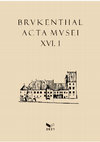
Brukenthal. Acta Musei, 2021
Abstract: The present contribution delivers a catalogue of the 166 Bronze Age socketed axes kept ... more Abstract: The present contribution delivers a catalogue of the 166 Bronze Age socketed axes kept in the collections of the Brukenthal Museum in Sibiu, Romania. The finds are mainly from the southeastern part of the Carpathian Basin and represent nearly all groups of socketed axes known from Romania: Beaked axes, facetted axes (the so-called Transylvanian type), axes with bell-shaped broadsides and axes with rich rib decoration, mainly in the form of chevrons and „Y“-shaped ornaments. The number and richness in types of the material allows to use them for a short overview of the main tendencies of development of the find groups within southern Transylvania.
Keywords: Bronze Age, Romania, Transylvania, socketed axes, chronology, distribution, catalogue, Brukenthal Museum.
Rezumat: Studiul de faţă prezintă un catalog cu 166 de topoare-celt de epoca bronzului din colecţiile Muzeului Brukenthal Sibiu, România. Descoperirile provin în cea mai mare parte din partea sud-estică a Bazinului Carpatic şi cuprind aproape toate tipurile de topoare-celt din România: celturi cu plisc, celturi cu faţete (aşa numitul tip transilvănean), celturi cu arcade şi celturi cu nervuri unghiulare sau în formă de „Y“. Numărul şi diversitatea tipologică a materialului ne permit relevarea unor tendinţe majore în dezvoltarea acestui tip de descoperiri în Transilvania de Sud în cadrul acestei scurte prezentări generale.
Cuvinte cheie: epoca bronzului, România, Transilvania, topoare de tip celt, cronologie, distribuţie, catalog, Muzeul Brukenthal.

Studia Antiqua et Archaeologica, 2021
Abstract. Single finds have so far often been neglected by archaeologists. This is partly based o... more Abstract. Single finds have so far often been neglected by archaeologists. This is partly based on a terminological fuzziness: the category ‘single find‘ is often not clearly differentiated from artefacts without information on find circumstances. The present paper used the Bronze Age socketed axes from Romania as a case study to show the potential value of real single finds (i.e. artefacts that have securely been found isolated). Mapping of single finds and hoards with socketed axes results in a complementary spatial patterning – regions with single finds and hoards exclude one another. This speaks clearly against an interpretation of single axes as lost objects. The find contexts of some single finds further sustain another interpretation, that of depositions of a single object.
Zusammenfassung. Einzelfunde sind eine bislang vernachlässigte Fundgattung, was teils au einer terminologischen Vermischung mit Gegenständen aus unklaren Fundumständen resultiert. Anhand der rumänischen Tüllenbeile wird aufgezeigt, dass die Untersuchung echter Einzelfunde nach adäquater Quellenkritik einen Beitrag zur Hortfundforschung leisten kann. Für Rumänien ergibt eine Kartierung der sicheren Einzelfunde von Tüllenbeilen ein der Verbreitung von Mehrstückhorten mit Tüllenbeilen komplementäres Bild, beide Fundkategorien schließen sich recht klar räumlich aus. Dies spricht klar gegen eine Interpretation der Einzelfunde als verloren gegangene Werkzeuge. Auch die Fundkontexte einiger Beile sprechen für Einstückdeponierungen als Bestandteil bronzezeitlicher Hortungssitten in der Region.
Rezumat. Descoperirile izolate reprezintă o categorie neglijată, în parte datorită confuziei terminologice cu artefacte provenite din contexte neclare. Pe baza celturilor de bronz de pe teritoriul României se va arăta că analiza descoperirilor cu real caracter izolat, după cum indică evaluarea critică a izvoarelor, poate aduce un aport important în arheologia depozitelor. În cazul României, cartarea descoperirilor sigure isolate de celturi redă o imagine complementară răspândirii depozitelor cu mai multe piese. Cele două categorii se exclud reciproc clar din punct de vedere teritorial. Această situaţie sugerează interpretarea descoperirilor izolate drept piese pierdute ca improbabilă. De asemenea, şi anumite contexte ale descoperirilor indică depunerea de descoperiri izolate ca fiind o componentă a practicii depunerilor de bronzuri din această regiune.
Journal of Archaeological Science: Reports 34, 2020
An integrated approach using contextual, use-wear, scientific and experimental methods was used t... more An integrated approach using contextual, use-wear, scientific and experimental methods was used to analyze the role of stone troughs of up to 165 l capacity at the Early Neolithic site Göbekli Tepe in the context of other stone containers found there. Around 600 (mostly fragmentary) vessels from the site constitute the largest known assemblage from the Pre-Pottery Neolithic of the Near East. Besides the large limestone troughs, it encompasses middle-sized, coarsely made limestone vessels, finely executed platters and 'greenstone' vessels. All lines of evidence taken together indicate the use of limestone troughs for the cooking of cereals.
Analele Banatului, 2019
A Forgotten Hoard from Braşov (Romania). Bronze Age Hoarding in the Ţara Bârsei Region. (Abstract... more A Forgotten Hoard from Braşov (Romania). Bronze Age Hoarding in the Ţara Bârsei Region. (Abstract) e present contribution discusses a small so-far unknown hoard find from Braşov-Stupini, consisting of two sock-eted axes, of which only one is preserved. e find is discussed in the context of Bronze Age hoarding in the Ţara Bârsei region. Starting from the Middle Bronze Age and well into the Late Bronze Age the region is characterised by hoards consisting of just one object class. Only towards the end of the Bronze Age more complex hoards appear.
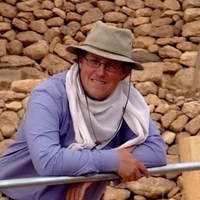


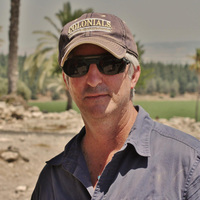
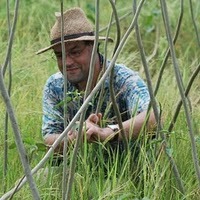


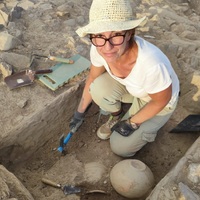


Uploads
Books by Oliver Dietrich
This volume considers the changes in archaeological thought and practice that have taken place – or not taken place – in Bronze Age studies in the countries that were previously part of the Soviet bloc. Contributors from Hungary, the Czech Republic, Slovakia and Romania, as well as German and British scholars who have worked in those countries in recent years, describe aspects of their experiences in fieldwork and interpretation in the 30 years that have elapsed since that time. These are supplemented by personal reflections by a group of British scholars who worked there both before and after the “Change”. While the contributions present personal views, the message is clear, that the academic landscape in the Bronze Age archaeology of central and eastern Europe has changed out of all recognition in these last decades.
23 Studies centering on the Bronze Age of the Carpathian Basin.
Papers by Oliver Dietrich
selection and placement of only specific bronzes is particularly evident here. The present article discusses "pure" hoards composed exclusively of socketed axes along the lower Danube and in the eastern Carpathian Basin. A new list of such discoveries is presented, their chronology, chorology and interpretation discussed.
Şpălnaca II and Uioara de Sus. While several studies have shown that hoards are constituted due to regionally and chronologically differing rules about the categories and conditions of objects included and thus the hoarding phenomenon constitutes a social praxis rooted in religious beliefs, finds with a large number of fragments and raw material have traditionally been interpreted as accumulations of scrap metal for re‑melting. Here, the focus is on two aspects of the large hoards that speak against that interpretation. The four hoards can be identified as long‑term collections, including objects that date between the Middle Bronze Age and the “jüngere Typengesellschaft” after v. Brunn. Although roughly contemporary and located in a relatively small area, they have different catchment areas. Socketed axes with chevron decoration and marks on sickles are used as case studies to look at possible formation processes. Certain decoration variants are characteristic to regions within Transdanubia and the Sava‑Drava‑region. In Transylvania, they are known nearly exclusively from Aiud, Guşteriţa II, Şpălnaca II and Uioara de Sus, which are located in an area rich in natural resources, particularly salt with the Mureş as westwards connection. Drawing on Marcel Mauss’ theory on gift exchange as basis for trade networks, the peculiar distribution of these bronzes is evidence for intense and long‑term west‑east contacts possibly based on salt as a commodity. Several possibilities for the role of “foreign” bronzes within this network are discussed: (1) as gifts between people to secure personal relations for trade; (2) as a payment for salt; (3) as votives of “foreign” people visiting the region for trade. Hoarding these objects may have been a means of demonstrating the importance of the dedicants within supra‑regional networks.
REZUMAT: Articolul de faţă prezintă piese care, până
acum, au fost considerate ca aparţinând unui depozit
descoperit la Ocna Sibiului. Verificarea descoperirilor
pe baza bibliografiei publicate şi a inventarelor aflate la
Muzeul din Braşov indica faptul că, cel mai probabil, piesele
provin din locaţii diferite de pe teritoriul localităţii,
fără a compune un depozit.
SCHLÜSSELWÖRTER: Bronzezeit; Hortfund; Ocna Sibiului; Fundkritik.
CUVINTE-CHEIE: Epoca Bronzului; depozit de bronzuri; Ocna Sibiului; critica izvoarelor.
Keywords: Bronze Age, Romania, Transylvania, socketed axes, chronology, distribution, catalogue, Brukenthal Museum.
Rezumat: Studiul de faţă prezintă un catalog cu 166 de topoare-celt de epoca bronzului din colecţiile Muzeului Brukenthal Sibiu, România. Descoperirile provin în cea mai mare parte din partea sud-estică a Bazinului Carpatic şi cuprind aproape toate tipurile de topoare-celt din România: celturi cu plisc, celturi cu faţete (aşa numitul tip transilvănean), celturi cu arcade şi celturi cu nervuri unghiulare sau în formă de „Y“. Numărul şi diversitatea tipologică a materialului ne permit relevarea unor tendinţe majore în dezvoltarea acestui tip de descoperiri în Transilvania de Sud în cadrul acestei scurte prezentări generale.
Cuvinte cheie: epoca bronzului, România, Transilvania, topoare de tip celt, cronologie, distribuţie, catalog, Muzeul Brukenthal.
Zusammenfassung. Einzelfunde sind eine bislang vernachlässigte Fundgattung, was teils au einer terminologischen Vermischung mit Gegenständen aus unklaren Fundumständen resultiert. Anhand der rumänischen Tüllenbeile wird aufgezeigt, dass die Untersuchung echter Einzelfunde nach adäquater Quellenkritik einen Beitrag zur Hortfundforschung leisten kann. Für Rumänien ergibt eine Kartierung der sicheren Einzelfunde von Tüllenbeilen ein der Verbreitung von Mehrstückhorten mit Tüllenbeilen komplementäres Bild, beide Fundkategorien schließen sich recht klar räumlich aus. Dies spricht klar gegen eine Interpretation der Einzelfunde als verloren gegangene Werkzeuge. Auch die Fundkontexte einiger Beile sprechen für Einstückdeponierungen als Bestandteil bronzezeitlicher Hortungssitten in der Region.
Rezumat. Descoperirile izolate reprezintă o categorie neglijată, în parte datorită confuziei terminologice cu artefacte provenite din contexte neclare. Pe baza celturilor de bronz de pe teritoriul României se va arăta că analiza descoperirilor cu real caracter izolat, după cum indică evaluarea critică a izvoarelor, poate aduce un aport important în arheologia depozitelor. În cazul României, cartarea descoperirilor sigure isolate de celturi redă o imagine complementară răspândirii depozitelor cu mai multe piese. Cele două categorii se exclud reciproc clar din punct de vedere teritorial. Această situaţie sugerează interpretarea descoperirilor izolate drept piese pierdute ca improbabilă. De asemenea, şi anumite contexte ale descoperirilor indică depunerea de descoperiri izolate ca fiind o componentă a practicii depunerilor de bronzuri din această regiune.
This volume considers the changes in archaeological thought and practice that have taken place – or not taken place – in Bronze Age studies in the countries that were previously part of the Soviet bloc. Contributors from Hungary, the Czech Republic, Slovakia and Romania, as well as German and British scholars who have worked in those countries in recent years, describe aspects of their experiences in fieldwork and interpretation in the 30 years that have elapsed since that time. These are supplemented by personal reflections by a group of British scholars who worked there both before and after the “Change”. While the contributions present personal views, the message is clear, that the academic landscape in the Bronze Age archaeology of central and eastern Europe has changed out of all recognition in these last decades.
23 Studies centering on the Bronze Age of the Carpathian Basin.
selection and placement of only specific bronzes is particularly evident here. The present article discusses "pure" hoards composed exclusively of socketed axes along the lower Danube and in the eastern Carpathian Basin. A new list of such discoveries is presented, their chronology, chorology and interpretation discussed.
Şpălnaca II and Uioara de Sus. While several studies have shown that hoards are constituted due to regionally and chronologically differing rules about the categories and conditions of objects included and thus the hoarding phenomenon constitutes a social praxis rooted in religious beliefs, finds with a large number of fragments and raw material have traditionally been interpreted as accumulations of scrap metal for re‑melting. Here, the focus is on two aspects of the large hoards that speak against that interpretation. The four hoards can be identified as long‑term collections, including objects that date between the Middle Bronze Age and the “jüngere Typengesellschaft” after v. Brunn. Although roughly contemporary and located in a relatively small area, they have different catchment areas. Socketed axes with chevron decoration and marks on sickles are used as case studies to look at possible formation processes. Certain decoration variants are characteristic to regions within Transdanubia and the Sava‑Drava‑region. In Transylvania, they are known nearly exclusively from Aiud, Guşteriţa II, Şpălnaca II and Uioara de Sus, which are located in an area rich in natural resources, particularly salt with the Mureş as westwards connection. Drawing on Marcel Mauss’ theory on gift exchange as basis for trade networks, the peculiar distribution of these bronzes is evidence for intense and long‑term west‑east contacts possibly based on salt as a commodity. Several possibilities for the role of “foreign” bronzes within this network are discussed: (1) as gifts between people to secure personal relations for trade; (2) as a payment for salt; (3) as votives of “foreign” people visiting the region for trade. Hoarding these objects may have been a means of demonstrating the importance of the dedicants within supra‑regional networks.
REZUMAT: Articolul de faţă prezintă piese care, până
acum, au fost considerate ca aparţinând unui depozit
descoperit la Ocna Sibiului. Verificarea descoperirilor
pe baza bibliografiei publicate şi a inventarelor aflate la
Muzeul din Braşov indica faptul că, cel mai probabil, piesele
provin din locaţii diferite de pe teritoriul localităţii,
fără a compune un depozit.
SCHLÜSSELWÖRTER: Bronzezeit; Hortfund; Ocna Sibiului; Fundkritik.
CUVINTE-CHEIE: Epoca Bronzului; depozit de bronzuri; Ocna Sibiului; critica izvoarelor.
Keywords: Bronze Age, Romania, Transylvania, socketed axes, chronology, distribution, catalogue, Brukenthal Museum.
Rezumat: Studiul de faţă prezintă un catalog cu 166 de topoare-celt de epoca bronzului din colecţiile Muzeului Brukenthal Sibiu, România. Descoperirile provin în cea mai mare parte din partea sud-estică a Bazinului Carpatic şi cuprind aproape toate tipurile de topoare-celt din România: celturi cu plisc, celturi cu faţete (aşa numitul tip transilvănean), celturi cu arcade şi celturi cu nervuri unghiulare sau în formă de „Y“. Numărul şi diversitatea tipologică a materialului ne permit relevarea unor tendinţe majore în dezvoltarea acestui tip de descoperiri în Transilvania de Sud în cadrul acestei scurte prezentări generale.
Cuvinte cheie: epoca bronzului, România, Transilvania, topoare de tip celt, cronologie, distribuţie, catalog, Muzeul Brukenthal.
Zusammenfassung. Einzelfunde sind eine bislang vernachlässigte Fundgattung, was teils au einer terminologischen Vermischung mit Gegenständen aus unklaren Fundumständen resultiert. Anhand der rumänischen Tüllenbeile wird aufgezeigt, dass die Untersuchung echter Einzelfunde nach adäquater Quellenkritik einen Beitrag zur Hortfundforschung leisten kann. Für Rumänien ergibt eine Kartierung der sicheren Einzelfunde von Tüllenbeilen ein der Verbreitung von Mehrstückhorten mit Tüllenbeilen komplementäres Bild, beide Fundkategorien schließen sich recht klar räumlich aus. Dies spricht klar gegen eine Interpretation der Einzelfunde als verloren gegangene Werkzeuge. Auch die Fundkontexte einiger Beile sprechen für Einstückdeponierungen als Bestandteil bronzezeitlicher Hortungssitten in der Region.
Rezumat. Descoperirile izolate reprezintă o categorie neglijată, în parte datorită confuziei terminologice cu artefacte provenite din contexte neclare. Pe baza celturilor de bronz de pe teritoriul României se va arăta că analiza descoperirilor cu real caracter izolat, după cum indică evaluarea critică a izvoarelor, poate aduce un aport important în arheologia depozitelor. În cazul României, cartarea descoperirilor sigure isolate de celturi redă o imagine complementară răspândirii depozitelor cu mai multe piese. Cele două categorii se exclud reciproc clar din punct de vedere teritorial. Această situaţie sugerează interpretarea descoperirilor izolate drept piese pierdute ca improbabilă. De asemenea, şi anumite contexte ale descoperirilor indică depunerea de descoperiri izolate ca fiind o componentă a practicii depunerilor de bronzuri din această regiune.
Laura Dietrich , Eva Götting-Martin , Jasmine Hertzog, Philippe Schmitt-Kopplin ,
Patrick E. McGovern, Gretchen R. Hall, W. Christian Petersen , Martin Zarnkow, Mathias Hutzler, Fritz Jacob, Christina Ullman, Jens Notroff, Marco Ulbrich, Eckhard Flöter, Julia Heeb, Julia Meister, Oliver Dietrich
An integrated approach using contextual, use-wear, scientific and experimental methods was used to analyze the role of stone troughs of up to 165 l capacity at the Early Neolithic site Go ̈bekli Tepe in the context of other stone containers found there. Around 600 (mostly fragmentary) vessels from the site constitute the largest known assemblage from the Pre-Pottery Neolithic of the Near East. Besides the large limestone troughs, it encompasses middle-sized, coarsely made limestone vessels, finely executed platters and ‘greenstone’ vessels. All lines of evidence taken together indicate the use of limestone troughs for the cooking of cereals.
Stone vessels are an elusive find category at Göbekli Tepe. Only fragments remain, probably kept as raw material. This makes it impossible to estimate how many of these vessels may have been present at the site in total. Their reuse, however, underlines the importance of their raw material, and thus most likely also of the richly decorated vessels themselves, for the Neolithic people producing, using, and reusing them. Special raw materials and production effort make the polished stone vessels a costly and extraordinary find group among the PPN material culture. Their presence at Göbekli Tepe, where complete vessels are missing but fragments hint at a complex chaîne opératoire of recycling the (tangible and sentimentally valuable) raw material into personal items, widens our understanding of social activities taking place at the site.
Vast evidence for feasting at the site seems to hint at work feasts to accomplish the common, religiously motivated task of constructing these enclosures. Given the significant amount of time, labour and skilled craftsmanship invested, and as elements of Göbekli Tepe’s material culture can be found around it in a radius of roughly 200 km all over Upper Mesopotamia, it is likely that the site was the cultic centre of transegalitarian groups.
Access to and command of knowledge crucial to the society’s identity and well-being may have served as a social barrier hindering individuals to step outside of the given limits, while being the basis for power over the work-force of others for a restricted group of people. Social hierachization seems to emerge already in the PPN A of Upper Mesopotamia, earlier than hitherto suspected thought.
Hansen, S. 1996-1998. Migration und Kommunikation während der späten Bronzezeit. Die Depots als Quelle für ihren Nachweis. Dacia N.S., XL-XLII: 5-28.
Some researchers try to explain this brusque appearance as the result of a local development starting from Early Bronze Age socketed chisels. Others tend to seek the origin of the innovation in the east. The earliest socketed axes in Eurasia can be roughly dated to 2000calBC, belonging to the so-called Seima-Turbino horizon of metalwork reaching from the Altai to Finland. Starting from there a complex pattern of migration of this innovation through different cultural milieus is suggested, until its arrival in the Carpathian Basin in connection with the westward migration of the Noua Culture around 1400calBC.
The large quantity, high variety and regionality of styles of Bronze D socketed axes hint at a prolonged local development. As evidence for earlier socketed axes, e.g. casting moulds, can be found in settlements, the rules of hoarding seem to obscure the archaeological visibility of this innovation in the Middle or even Early Bronze Age of southeastern Europe.
The archaeological record has to be reappraised critically to clarify, whether the appearance of socketed axes is connected to one center from where itinerary patterns of the innovation can be traced, or whether the ‚idea of socketed celts‘ (Childe) arose at several centers simultaneously.
Anthropomorphe Darstellungen in Ton sind ein Phänomen, das man hauptsächlich mit dem Neolithikum assoziiert. In der Bronzezeit fehlen Figurinen weitgehend im Fundbild der donau-karpatenländischen Kulturen. Eine deutliche Ausnahme stellt allein die Gârla Mare-Kultur an der unteren Donau mit ihrem reichhaltigen Figurineninventar dar. Anthropomorphe Plastiken fehlen allerdings auch darüber hinaus nicht völlig. Besonders im Verbreitungsgebiet der Wietenberg- und Tei-Kultur ist eine Reihe von recht einfachen, grob gefertigten Beispielen bekannt.
Handelt es sich hierbei um letzte Reflexe neolithischer Glaubensvorstellungen und Ritualpraktiken? Oder stellen die Figurinen in diesem Fall, wie für Objekte geringer Ausmaße und begrenzter Fertigungsqualität gelegentlich angenommen, ad hoc, möglicherweise von Kindern selbst gefertigte Spielzeuge dar?
Dieser Fragestellung soll ausgehend von zwei Funden aus der bronzezeitlichen Siedlung von Rotbav, Kr. Braşov für die Wietenberg- und Tei-Kultur nachgegangen werden. Dabei sollen zunächst die archäologischen Indizien zur Interpretation dieser Objekte gesammelt und dann ethnologisch-anthropologischen Überlegungen gegenübergestellt werden. Ziel soll dabei nicht nur ein Beitrag zum Verständnis der bronzezeitlichen einfachen Figuralplastik sein, sondern auch eine Abwägung der Möglichkeiten und Grenzen beider Interpretationsansätze.
With contributions by Jörg Becker, Lee Clare, Oliver Dietrich, Ludwig Morenz, Jens Notroff, Klaus Schmidt, Trevor Watkins.